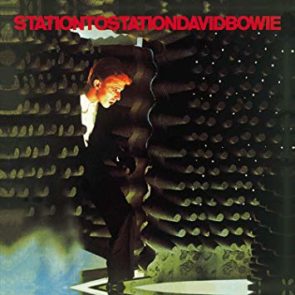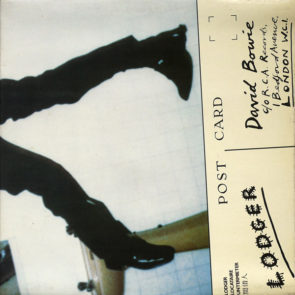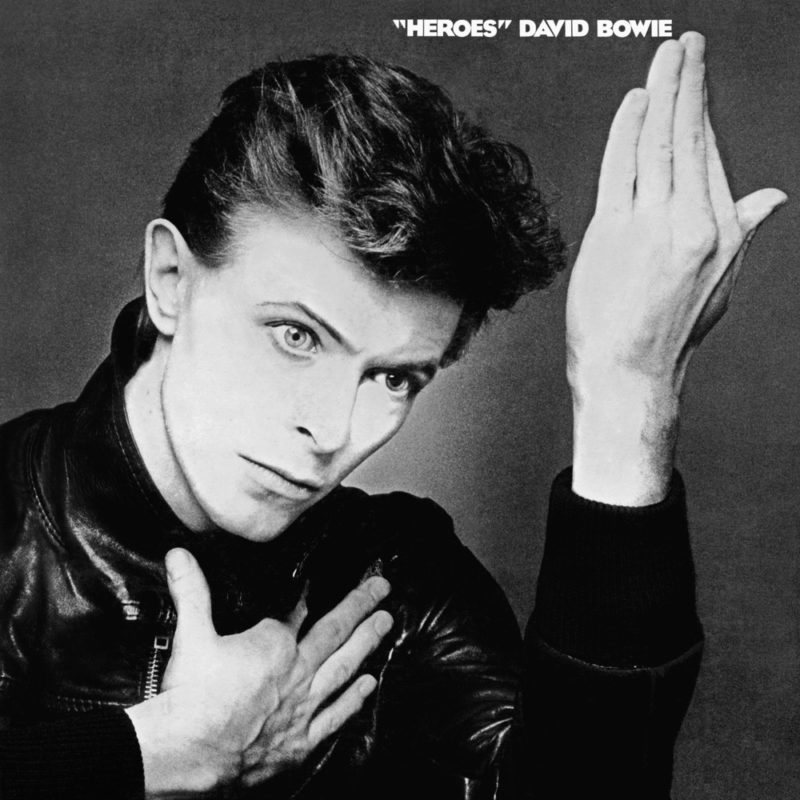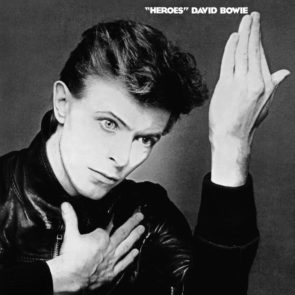
Torture. Moral issues aside, does it work?
You have a man in your care, with a fact in his head. Can you torture it out of him? Maybe. But he hates you, because you’re torturing him, so he might tell you the fact in an incomplete or misleading way. And couldn’t you have gotten the fact from him using another method? Consider Knightian uncertainty: you don’t know what you don’t know, and a well-treated prisoner might divulge additional facts that he didn’t have to. A tortured man never will.
Defenders of torture, of course, have a slam-dunk defense of their art: that it created David Bowie’s Station to Station.
It contains the greatest Bowie song ever (“Station to Station”), the greatest Bowie lyric ever (to be discussed), the greatest Bowie pop song ever (“Golden Years”) and the greatest opening chord on a Bowie song ever (Carlos Alomar’s Am7 on “Wild is the Wind”). I advise listening to this album soon and often. It’s amazing. But do be advised: it was created through torture.
It was created during a horrific period of Bowie’s life, where the drugs begin taking the man. Alone in a mansion in Benedict Canyon, Hollywood, he went insane. It’s all there in the biographies: storing his piss in jars, seeing UFOs, to see his spectral aura, exorcising Satan from his swimming pool, believing that the Rolling Stones were sending him messages in their album covers. Some of these might be myths, or embroideries on the truth. Bowie himself is no help. He says he doesn’t recall making Station to Station at all.
Did he create Station to Station? The album isn’t a pathetic drooling mess of needle injection sites and discarded cocaine twists, as most “druggie” albums. It sounds tight and professional, brightly mixed, with some of his best top melody singing. This is the work of a man at the peak of his power.
The title track is, well, a perfect song. It runs for ten minutes, and you want it to keep going. Train noises are heard, wandering across the stereo field. The train is moving, and we’re not on it. The blurring steel hammer disappears over the horizon, and a loping 2/2 alla breve vamp takes its place. It sounds tight and smouldering on the record, but gigantic live. One of the downsides of the whole Bowie-being-dead business is that he won’t ever play “Station to Station” again. Listeners are free to imagine him in their bedroom, miming to the song while wearing a dress, but somehow it’s not the same for me.
Halfway through, the song erupts, blasting out lyrical and sonic incalescence. “Once there were mountains on mountains!” Cmaj, Dmaj, Emaj, Amaj, Emaj, F#min. The great lyrical moment happen here: “It’s not the side-effects of the cocaine! / I’m thinking that it must be love.” Listen to his difficult, strained delivery, and these two lines crackle with the energy of broken power cables. The world turns beneath him, mountains collapsing to rubble. Just for a moment, David Robert Jones from Brixton is Zeus, hurling thunderbolts. His mind sounds smashed to pieces, reassembled, but somehow stronger and purer than it was before. This signals the final shift in “Station to Station”. The band spins out of control, as if a life-rope’s been cut, and the remaining five minutes are spent in a long vamp built from repeated declamations of “it’s too late”.
Contrary to popular belief, Station to Station has other songs. “Golden Years” is an extremely catchy and well-realised single. The performances aren’t quite as tight as, say, Low (listening to the vocals in isolation reveals that he’s a bit loose with his timing) but the total effect is one of sublime perfection. “TVC15” and “Stay” are similar in tone: jittery, anxious, and funk-driven. “TVC15” is apparently based on a nightmare Iggy Pop had of a TV swallowing his girlfriend. “Stay” is Carlos Alomar earning his paycheck, featuring a jagging main riff with a ninth note thrown in there. The words of the chorus are near incomprehensible word salad: a good evocation of a man who has turned his mind into an MC Escher painting. “Wild is the Wind” ends the album on a plangent note. A jazz ballad, with a wonderful misty and distant feeling.
“He put all of his effort into his art” is a cliche vapid, but it takes on a darker shade: we’re not supposed to put all our effort into one thing. We’re supposed to have lives. We’re supposed to be normal.
I once read a French horror comic (I can’t remember the name) about a race car driver, with a special bond to his vehicle. With his fuel running out, and the great race of his career on the line, the vampiric car sucks his blood out of his veins and burns it, winning the race and hurling a corpse across the finish line. That sums up Station to Station. The stunning artistic heights were achieved at great personal cost to Bowie. It’s a thumbscrew and a rack on a vinyl LP.
Albums cathartic to artists are often dull to listeners, and this is the reverse: another Station to Station might have killed him. After making this album, Bowie fled Los Angeles. As if he himself was the demon in the mansion, and he’d performed his own exorcism.

Despite being heralded as the last of “the Berlin Trilogy”, the sequence of albums Bowie while in tax exile, it sounds nothing like Low or “Heroes”. Whereas those were singular canvasses full of sound, this is just a collection of songs – some from Bowie’s top shelf, some from the bottom, and one from the wastebasket beneath it.
There’s a odd disunity within Lodger, it’s if nobody was quite sure of what they were doing. Maybe they weren’t. It’s no secret that the creative partnership of David Bowie and Brian Eno was falling apart by this point: Eno’s “compose in 17/8 while standing on your head and gargling noodles” tricks were growing irritating, and weren’t producing usable material. One stunt involved the backing band switching instruments. Another involved Eno drawing eight random chords on a blackboard and then having the band play whatever one he pointed at. Entire days were wasted in this fashion, producing nothing but countless hours of garbage. After Lodger landed on the charts with a desultory thud, Bowie chose not to work with Eno for his next release.
Which isn’t to say Lodger doesn’t have moments of greatness, which it does. But for the first time since Bowie landed in continental Europe, it has failures. Not lots of them, but they’re hard to ignore, particularly when one of them is up there with the most awful songs he ever wrote.
But let’s start with the best part: the three leading songs. “Fantastic Voyage” is a flamboyant, sashaying piece that reaches back to his Station to Station sound. Its lyrics connect mental illness and cold war paranoia. It’s a simple matter: we all have bad days (the Thin White Duke could attest to this), but national leaders have bad days, too…and they have the ability to destroy the world. This is the flaw in the doctrine of Mutually Assured Destruction – it relies on everyone in the world being rational and sane. What happens when nuclear weapons end up in the hands of a lunatic? The line “learning to live with someone’s depression” is darkly mocking. When the bombs start to fly, we might not need to learn.
“African Night Flight” is a paranoid freakout. It sounds a bit like a 33 RPM record of “Aladdin Sane (1913-1938-197?)” played at 45 RPM by mistake. Panicky, compelling stuff. “Move On” takes chords from “All of the Dudes” (a potential megahit that Bowie foolishly gave away in 1974 to nearly-forgotten glam act Mott the Hoople), and reverses them, turning a pop song into fascinating avant garde pop. As with “Heroes”, the lyrics seem laid on with a trowel, as if he’s parodying what a typical songwriter would write.
“Yassassin” is four minutes of drizzling shit. I can’t find words for much I hate it. It’s like middle school, when your teacher decides you need a dose of capital-c Culture and you get dragged off to see a kabuki show or something. Fuck off. I don’t want culture. I don’t want to broaden my horizons. Throw this song in the bin.
Side two begins with the musically average and lyrically excellent “DJ”. Bowie is at his cruelest and most sardonic here, he’s an egocentric disk jockey who thinks he’s king of the dance floor (“I got believers!” he crows). But as with Rupert Pupkin in The King of Comedy, we soon realise there’s something very wrong with him. DJs tend to be a bit “off”: they’re all performance, all illusion; no matter how full or how sweaty the dance floor gets, other people wrote the songs they’re playing. The crowd is grinding to Lady Gaga and Beyonce, not the guy behind the stacks, but many DJs lose sight of that. It’s a trade that attracts delusional narcissists.
“DJ” paints a picture of a man dangerously lost to fantasy, the real world slipping past his fingers like a shiny black record. He’s “(at) home, lost my job”, but that’s okay. It’s “realism”. Getting fired builds street cred, and he wouldn’t have it any other way. He says “I’ve got a girl out there, I suppose”…why are the last two words there? A repeated line in the chorus is “can’t turn around, can’t turn around”. Why can’t he turn around? Perhaps if he does, he’ll see that he doesn’t have quite so many “believers” as he thought. Perhaps he has no believers at all. Maybe it’s all an illusion, and he’s just a pathetic failure with no job and no girlfriend, spinning discs to an audience of nobody in his apartment. The song ends with the word “believers” skipping on its final two syllables. “Leave us…leave us…leave us…”
“Look Back in Anger” is a good track, inspiring Oasis and rendering them irrelevent in three minutes and eight seconds. Soon after, Lodger starts running into engine problems again. “Boys Keep Swinging” is fun and bouncy, but doesn’t stay with you. Nudge-nudge, wink-wink gaybaiting in the age of Jerry Falwell and Save Our Children doesn’t seem shocking, just hack. Then we get the ham-fisted “Repetition”, an unpleasant song about a man punching his wife around.
Album closer “Red Money” is a decent reworked track from The Idiot, although it sounded better with Iggy Pop singing it. More to the point, it’s now the second piece of old rope on a ten track LP (third, once you realise that “Boys Keep Swinging” has the same chords as “Fantastic Voyage”). Remember how Low and “Heroes” needed to make weight with covers and cast-offs? Oh, wait. They didn’t.
One can be too hard on Lodger. It’s another strong album, with lots of classic Bowie moments. But it was promoted wrong by RCA Records, and continues to be promoted wrong by fans to this day. It is not of a company with the two albums before it. The real Berlin Trilogy (according to to Bowie-ologist Chris O’Leary) is The Idiot (an Iggy Pop album hijacked at gunpoint by Bowie, and if you disagree you’re deaf), Low, and “Heroes”, with Lodger being a couple of footnotes. I agree, except “Yassassin” is a turd smear.

 “Heroes” doesn’t equal the height of Low, but it’s an incredible album in its own way. Bowie created astonishing work in Berlin, and “Heroes” carved his name even deeper in the wall.
“Heroes” doesn’t equal the height of Low, but it’s an incredible album in its own way. Bowie created astonishing work in Berlin, and “Heroes” carved his name even deeper in the wall.
The opening track is snaky and serpentine, with Bowie spelunking down to the lower end of his range (“…gone wrong” slides to C#2, one of his deepest studio notes). “Heroes”‘ songs fall into two categories: the ones that make sense on their own, the the ones that make sense as part of “Heroes”. This is one of the former.
By contrast, track 2, “Joe the Lion”, is the latter. I can’t listen to it without the rest of the album: it sounds agitated and broken and gives the listener no relief at the end. But it does provide effective contrast for the krautrock-infused nostalgia of the next track: it’s like driving over a broken road, which changes to smooth blacktop.
The title song is the obligatory classic, which has survived overplay through massive sonic depth. There’s much to discover inside “Heroes”, between Carlos Alomar’s fill-in lines and Brian Eno’s electronic squawks. The song’s like an infinitely unfolding sheet of paper, containing yet more scribbles inside each unfurled fold. The lyrics are broad, and on the page sound faintly mocking, although no trace of this comes through on the record.
Functional harmonists describe music as a journey made of chords. When you listen to the tonic chord containing the key signature, you’re at home (in the Beatles’ “Yellow Submarine” this chord underlines “in the town…”). The subdominant chord is like leaving home to go on a journey (“…where I was born…”), the dominant chord is like arriving at your destination (“…lived a man…”) and then you might go home again back to the tonic (“…who sailed to sea.”).
Maybe my ear is bad, but little of “Heroes” makes sense when analysed in this fashion. There’s nothing that sounds like home, or a journey, or a destination. Notes swirl like squid ink, sometimes coagulating into chords, more often becoming pure texture. Even interesting. The album’s explorative nature is irresistable, even when it leaves the listener behind.
“V-2 Schneider” opens with air-tattered wailing, reminiscent of London during the blitz. The V-2s (German “Vergeltungswaffe”, “Retribution Weapon”) were long-range ballistic missiles, fired across the English channel at London, where they killed an average of two limeys per missile. The other side of the story was the 12,000 forced laborers who died in the production of the missiles. As with many purported Nazi superweapons, the V-2 was far more lethal to its builders than its targets. “Schneider” is “Florian Schneider-Esleben”, one of the founders of Kraftwerk: Bowie finally removed the letter c from his covert krautrock borrowings, making them overt.
“Sense of Doubt” is very dark, featuring a piano microphoned so that every note cleaves space with the power of an axe. A glittering synth line is introduced, as black as polished anthracite. I assumed this was Brian Eno’s work, but the song credits only Bowie. Much of the Berlin trilogy’s instrumental work was creating through procedural experimentation – the composer(s) drawing a card with instructions on it (“Use an unacceptable color”) and trying to attach a song to that scaffold. This isn’t unlike the process used by the Oulipo group to write books – although the Oulipists have yet to produce their Berlin Trilogy.
Traces of life stir in the shadow of this track. “Neukoln” is Bowie going “hey, remember when I used to play the saxophone?” and pairing it with yet more brutalist sonic architecture. His expressiveness seems like a plant weaving through cracked concrete.
The pattern of songs/ambience was used before in Low, which is part of why I prefer it. Even at its best, “Heroes” is retracing his own path, not forging a new one. The only difference is the final track, “The Secret Life of Arabia”, which is actually a song again. Maybe there is a journey to “Heroes”, but instead of in the chords, it’s in the songs. But there’s no sense of home when you follow those twinkling stars, just oddness and neurotic experiments. Or has home changed while you were away?




 “Heroes” doesn’t equal the height of Low, but it’s an incredible album in its own way. Bowie created astonishing work in Berlin, and “Heroes” carved his name even deeper in the wall.
“Heroes” doesn’t equal the height of Low, but it’s an incredible album in its own way. Bowie created astonishing work in Berlin, and “Heroes” carved his name even deeper in the wall.